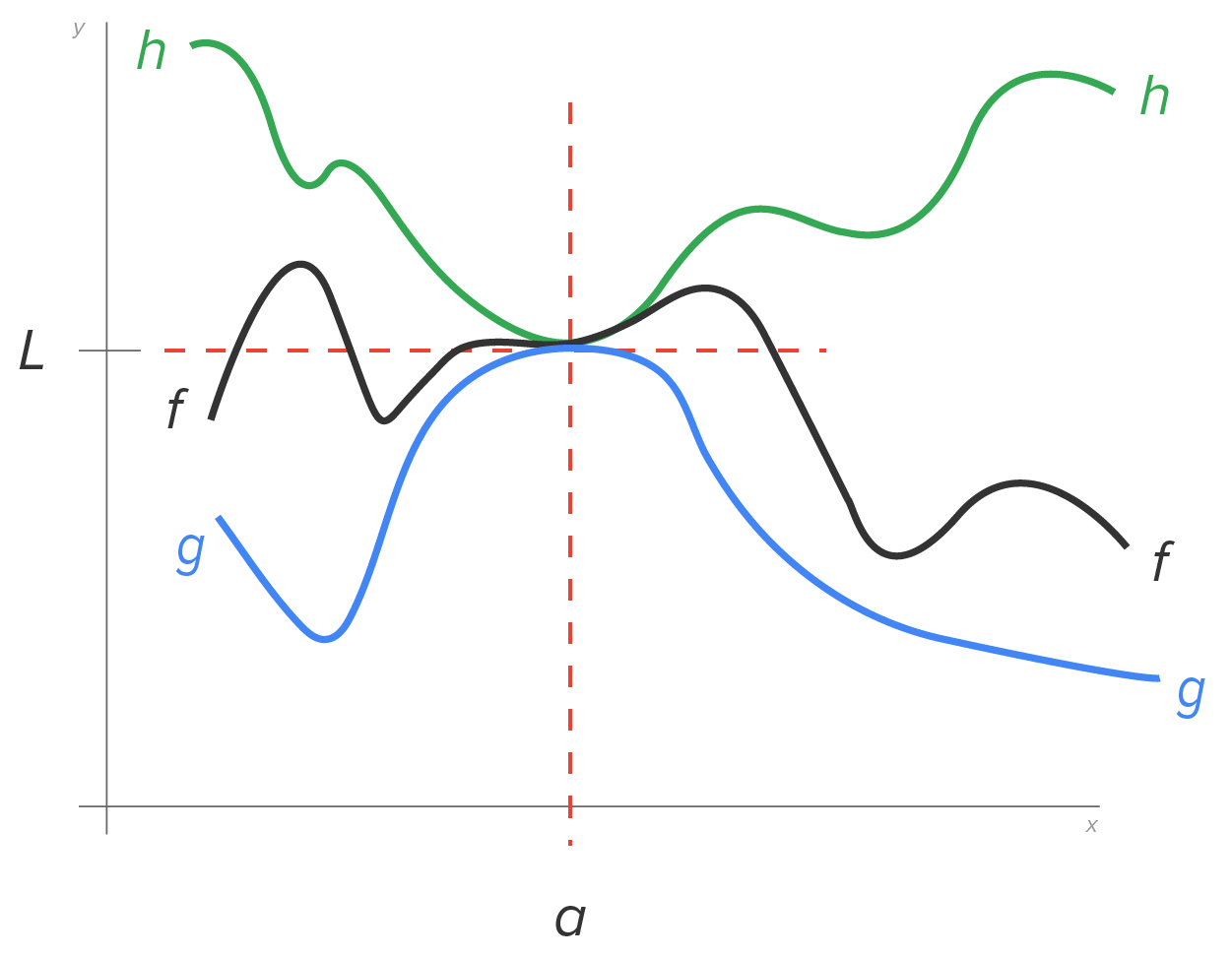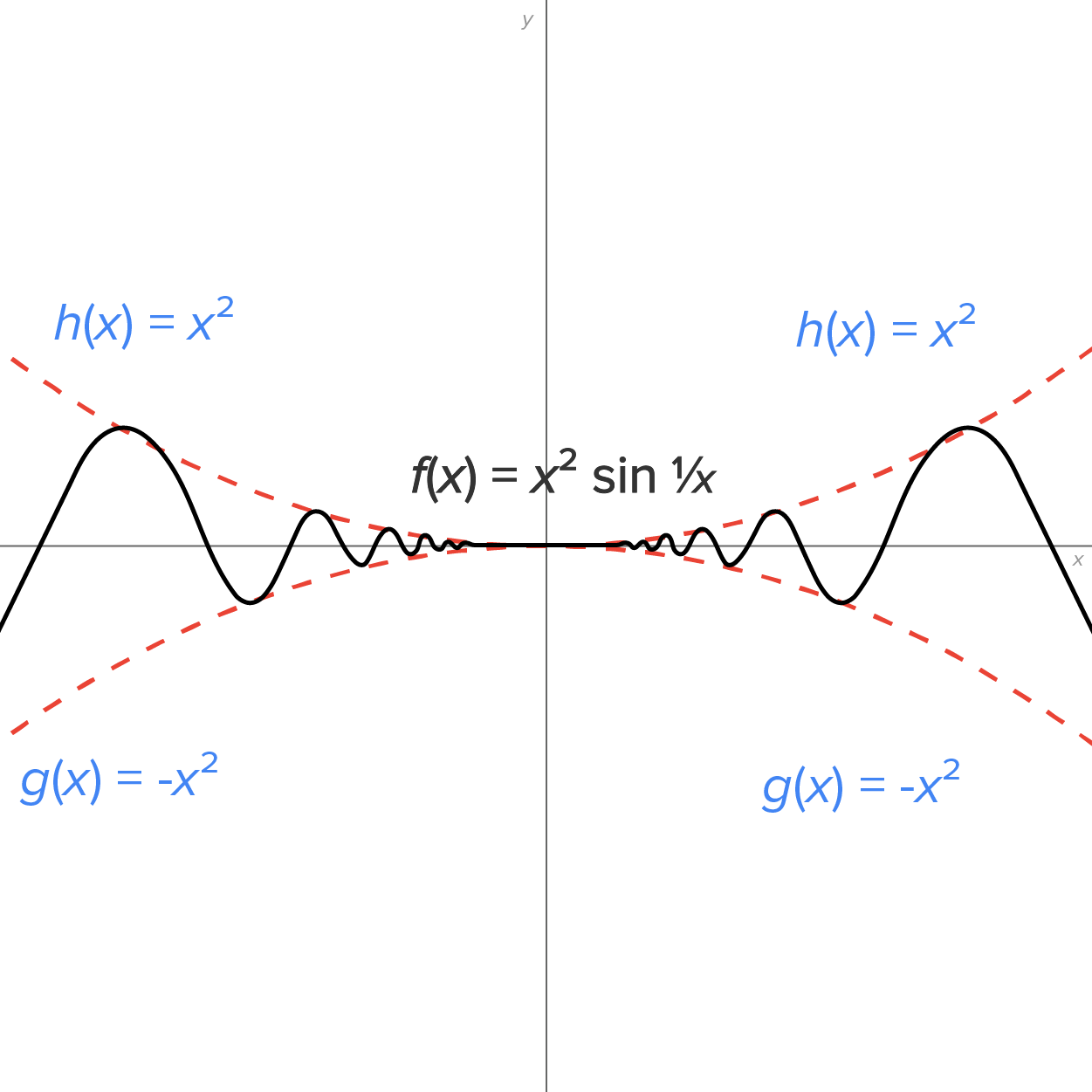Table of Contents |
The squeeze theorem is a theorem that uses limit values and states the following:
 for all values of x near
for all values of x near  as shown in the figure below.
as shown in the figure below.
 then
then 

You can evaluate limits by using the squeeze theorem.
EXAMPLE
Consider the limit Note that direct substitution does not work since the function is undefined when
Note that direct substitution does not work since the function is undefined when 
 This means for any choice of angle
This means for any choice of angle 
 This also means that
This also means that 

 Since
Since  the direction of the inequalities is preserved:
the direction of the inequalities is preserved:



 and
and  Since
Since  and
and  it follows by the squeeze theorem that
it follows by the squeeze theorem that 
 is always between the graphs of
is always between the graphs of  and
and 

EXAMPLE
Suppose for all x near
for all x near  except possibly at
except possibly at  Let's evaluate
Let's evaluate 
 and
and  it follows by the squeeze theorem that
it follows by the squeeze theorem that 
 near
near  Suppose you want to find
Suppose you want to find 
Source: THIS TUTORIAL HAS BEEN ADAPTED FROM CHAPTER 1 OF "CONTEMPORARY CALCULUS" BY DALE HOFFMAN. ACCESS FOR FREE AT WWW.CONTEMPORARYCALCULUS.COM. LICENSE: CREATIVE COMMONS ATTRIBUTION 3.0 UNITED STATES.